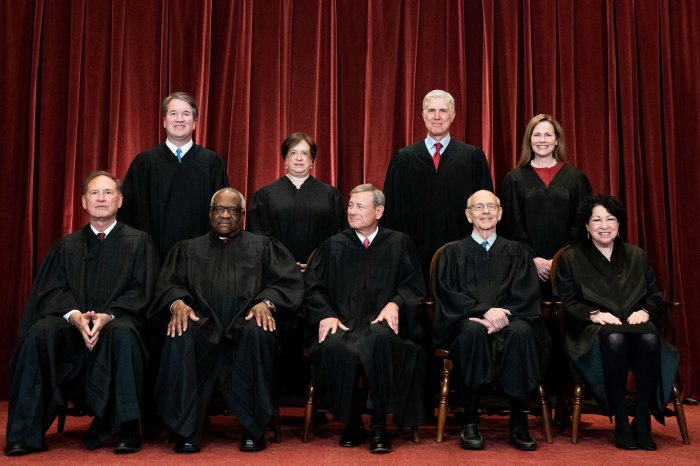1 of 5 | A photojournalist points his camera toward the bench in a DuPage County, Ill., courtroom. The proposed Cameras in Courtroom Act would allow, for the first time, hearings before the U.S. Supreme Court to be televised. File Photo by M. Spencer Green/UPI |
License Photo
June 17 (UPI) -- Senate lawmakers gathered for a hearing on Capitol Hill Thursday to weigh a proposal to allow Supreme Court hearings to be televised.
The Senate judiciary committee met to discuss the bipartisan Cameras in Courtroom Act, which would require the Supreme Court to permit television coverage of all open sessions.
Under the proposal, justices could vote on a case-by-case basis to bar televised coverage if they deem cameras would violate due process rights of one or more parties involved in a given case.
The legislation was introduced earlier this year by Sens. Chuck Grassley, R-Iowa, and Dick Durbin, D-Ill.
"Decisions made by the Supreme Court can resonate with our nation for generations, yet most Americans will never have a chance to see the highest court in action," Grassley said at the time.
"Opening up the Supreme Court's public proceedings to cameras and other broadcast tools provides a window into the court for all Americans, not just those in Washington, D.C."
"It's time to put cameras in the Supreme Court so Americans can finally see deliberations and rulings on cases which will affect them for generations to come," Durbin added.
"This bipartisan bill shines a light into the Judicial Branch of government so more than just a few hundred lucky Americans can watch proceedings in the Court's historic halls."
Grassley and Durbin introduced a similar bill in 2013 that ultimately failed to pass, but there may be more support for the idea this time around -- particularly after COVID-19 created additional access restrictions to the high court and led to live audio-streamed hearings last year.
Presently, the Supreme Court does not allow cameras and only on rare occasions has allowed audio recordings to be released from hearings.
Sens. Richard Blumenthal, D-Conn., and Amy Klobuchar, D-Minn., have cosponsored the Cameras in Courtroom Act.
In 2016, the Government Accountability Office released a report that highlighted the potential value of video and audio coverage of Supreme Court proceedings. The assessment notes benefits like enhanced public access, heightened education and a useful window into how courts weigh the issues of any given case.
Members of the U.S. Supreme Court pose for a group photo at the court in Washington, D.C., on Friday. Seated, from left to right, are Associate Justices Samuel Alito and Clarence Thomas, Chief Justice John Roberts and Associate Justices Stephen Breyer and Sonia Sotomayor. Standing, from left to right, are Associate Justices Brett Kavanaugh, Elena Kagan, Neil Gorsuch and Amy Coney Barrett. Pool Photo by Erin Schaff/UPI |
License Photo















